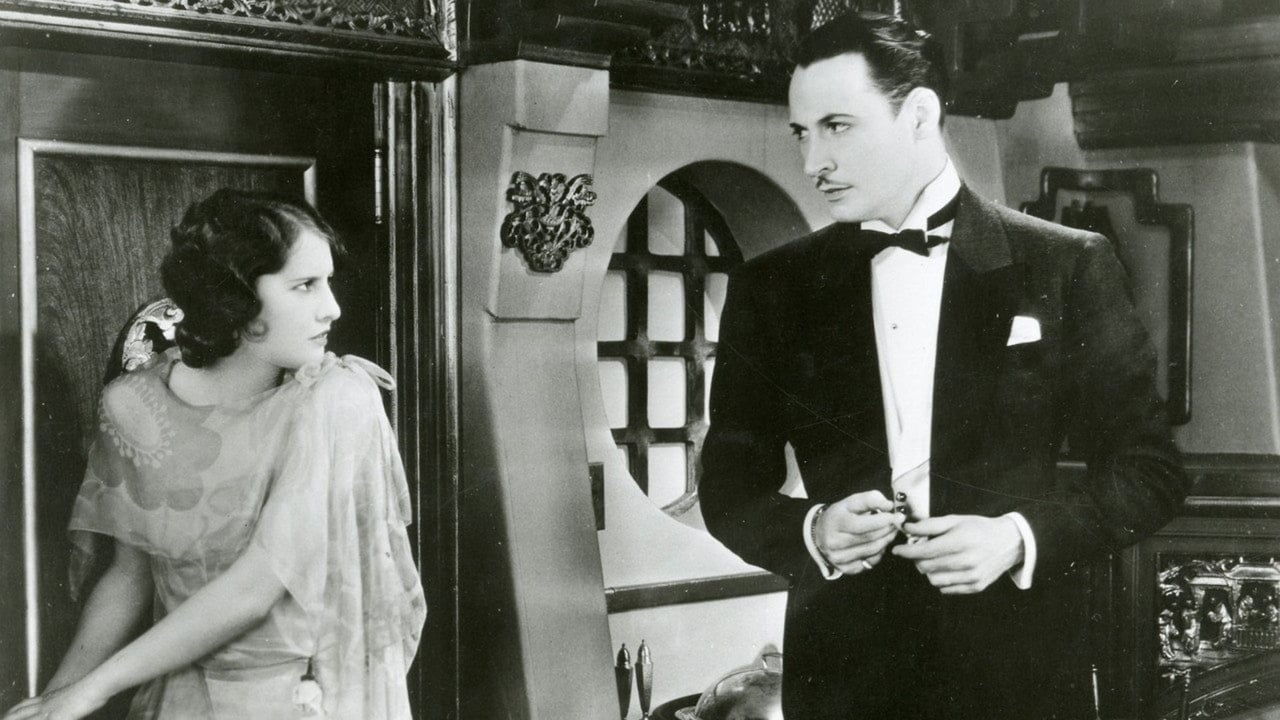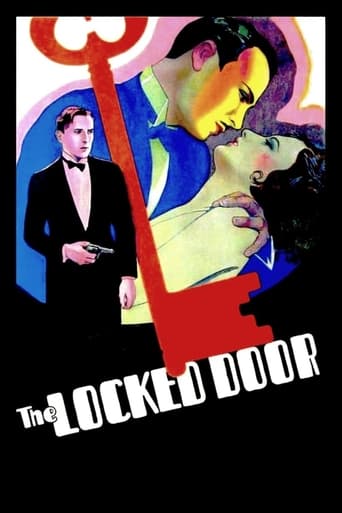

Intense, gripping, stylish and poignant
... View MoreIt isn't all that great, actually. Really cheesy and very predicable of how certain scenes are gonna turn play out. However, I guess that's the charm of it all, because I would consider this one of my guilty pleasures.
... View MoreClose shines in drama with strong language, adult themes.
... View MoreBlistering performances.
... View MoreIn The Locked Door, Barbara Stanwyck plays a happily married woman who's forced to face her unfortunate past when her former boyfriend/would-be rapist tries seducing her naive sister-in-law. It's a creaky plot even by 1920s standards, complete with tearful sacrifices and cardboard characterizations. Betty Bronson is the aforementioned sister-in-law and William Boyd sleepwalks through the film as the upright husband Stanwyck loves. Director George Fitzmaurice, most remembered for glittering exotic romances such as The Son of the Sheik, The Night of Love, and Mata Hari, weathers on pretty well and gives the film great stylistic flourishes every now and then, though there is the usual awkwardness to be expected from a 1929 talkie.Of course, you're likely watching this for the wonderful Barbara Stanwyck, here in her second film appearance (her first was in a 1927 silent film, though she did not play a major role there). She's saddled with a sad sack heroine, though she does give the character a greater sense of inner strength and intelligence than the script endows. It is by no means a great performance, but it is the best thing in an otherwise mediocre drama. Well, that and Rod La Rocque's hammy performance as the sleazy villain.
... View MoreThe first five minutes need to go viral on YouTube to prove to young people there is nothing new under the sun. It is a brilliant portrait of the bright young things getting s**t-faced on a boat, especially the women (all women the following: "I want a drink. I want a drink!! I want a drink!! I want a drink!!!"; and "I want a high ball. I want a high ball! I want two highballs!!"; and finally "I want two quarts of gin."). It is a priceless portrait of the emancipated flapper misbehaving! For old movie snobs, La Roque is an interesting villain - see why his career when nowhere with the talkies - he does villainous too believably for the audience of that era to ever let him have a mainstream role again. Stanwyck shows her chops, though she has yet to get her full form and is a little stagy.And you might enjoy the lipstick on Willian 'Stage' Boyd, not well done, but Mr Boyd clearly enjoys wearing it - checking out his bio, I am wondering if he was a bad, bad bisexual - the orientation everyone loves to hate? A young death at 46, so it would make sense that he was abandoned by both men and women...
... View MoreFor a while Betty Bronson looked like the natural successor to Mary Pickford's mantle of "America's Sweetheart". She was plucked from obscurity to achieve international stardom in "Peter Pan" but Paramount's indecision about how to showcase her talent not only stalled her career but ruined the studio's chance to develop her as one of their rising stars. By the time the "talkies" arrived - she was relegated to second female leads, unfortunately she didn't stand out from the crowd. Especially when she was playing opposite a new arrival from Broadway - Barbara Stanwyck.Secretary Ann (Barbara Stanwyck) is being wined and dined at an exclusive yacht party (that is serving illegal liquor beyond the twelve mile limit) by playboy Frank Devereux (Rod La Rocque). He wants a "good" time regardless of Ann's feelings but, like the cavalry, the booze police raid the liner, when it strays inside the limit and save Ann from a fate worse than death!!!Eighteen months later, Ann is happily married to wealthy Larry (William "Stage" Boyd). His sister, Helen, (adorable Betty Bronson) has some news of her own, she is completely smitten with - you guessed it, Frank Devereaux, who is trying out the same caveman tactics with her, before going to Hawaii the next day!!! Frank is in hot water - he has broken up the marriage of Larry's best friend Dixon and Dixon is out to kill him. Ann quickly flies to Frank's apartment, hoping to intercept Helen, who has secretly gone to keep a dinner rendezvous with him - even though she has been forbidden!!! Devereux's flat then becomes "Grand Central Station", as first Ann, then Larry file in for assorted showdowns. Devereux is murdered and it is no secret that Larry is the culprit. Ann has come in early and is hiding upstairs - Larry doesn't know she is there and locks the flat on his way out. Ann then goes into her act and before the night is over she has convincingly persuaded the police that she is the murderer. A surprising twist is the detective on the case, who reveals he was a plant on the booze liner, as the dopey waiter, who served Frank and Ann and can vouch for Ann's innocence. The film might be a yawn but Stanwyck isn't. She was a natural and convincing actress and while the other cast members try their best to pronounce all their words correctly, Barbara sounds and acts as though she has been acting in talkies for years - amazing for a stage actress!!!Recommended for Stanwyck.
... View MoreGeorge Fitzmaurice was one of the great commercial stylists among directors in the 1920s. He suffered an eclipse in the early talkie era but was fighting his way back into the majors when he died in 1940.This means, of course, there are a lot of problems with this movie. The screen actors don't know how to do dialogue and most of the stage actors don't know how to turn down their performances for the intimacy of the movie camera. Barbara Stanwyck, looking very fresh-faced, is very loud in her line readings. She knows how to show her emotions beautifully already, though.But producer Joe Schenck didn't spare any expense behind the camera, and it shows. Avant-garde cameraman Ray June handles the camera impeccably. While other directors were having their cameramen use cuts to change subjects, Fitzmaurice has June move the camera. Notice the long tracking shot at the bar in the opening sequence and the MOS shots used to fill out the sequence.The camera-work is not fluid. It is, frankly, fairly clunky, but it is light years ahead of anyone else in the business in 1929, except possibly Mamoulian's APPLAUSE.So while their are a lot of problems with this movie, the camera-work makes this one very superior for 1929 and Barbara Stanwyck makes it worth looking at.
... View More